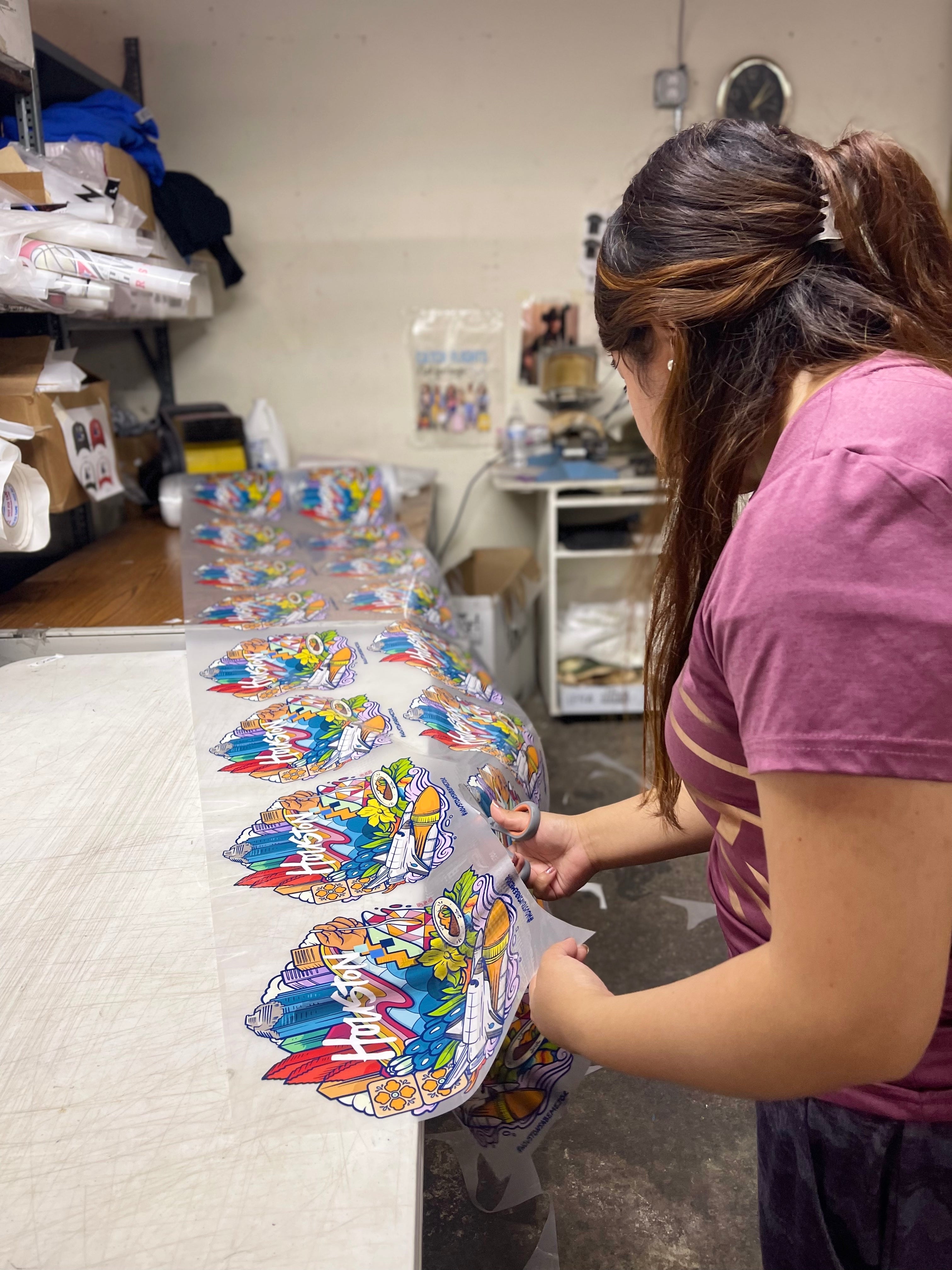Understanding DTF Printing: Tips and Tricks for Getting Vibrant and Durable Prints
In the globe of textile printing, achieving long lasting and lively prints is a desirable ability that can boost the top quality of your result. From picking the appropriate products to make improvements print setups and developing post-printing ending up strategies, there are countless variables that can influence the outcome of your prints.

DTF Printing Essentials
For those brand-new to the world of textile printing, understanding the principles of DTF printing is important to grasping this ingenious technique. Straight to Movie (DTF) printing is a modern method that entails transferring designs from an unique film onto various fabrics utilizing a heat press. Unlike traditional techniques like screen printing, DTF offers benefits such as dynamic colors, detailed outlining, and the ability to publish on diverse products like cotton, polyester, and blends.
The process begins by publishing the style on an unique DTF film using a suitable printer with CMYK or CMYKW ink sets. As soon as the style is printed, it is after that cured with a warmth press to create a sturdy and resilient print. DTF printing is understood for its capacity to replicate complex styles with high precision and shade accuracy, making it a prominent choice for organizations seeking to create custom-made apparel, advertising items, and extra.
Choosing the Right Products

The glue powder acts as a bonding agent between the published style and the fabric, so it has to have solid adhesion residential or commercial properties to ensure a lasting and durable transfer. By meticulously selecting the appropriate products for DTF printing, printers can enhance the top quality, vibrancy, and longevity of their prints.
Maximizing Print Settings
When aiming to attain the best results in DTF printing, thorough focus to optimizing print settings is critical for ensuring exact and high-quality transfers onto fabrics. One crucial facet to webpage consider when optimizing print settings is the resolution.
Another important setup to enhance is the print speed. Finding the appropriate equilibrium between rate and top quality is essential. While increasing the speed can improve efficiency, it may compromise the final print's clarity and shade saturation. Trying out various rates and observing the outcomes can assist identify the optimal setting for each print work - DTF Printing.
In addition, adjust shade profiles and guaranteeing proper shade monitoring are necessary for accomplishing precise and constant shades throughout different prints. By calibrating color settings and accounts, printers can minimize shade discrepancies and produce uniform outcomes, improving the overall print quality and consumer contentment.
Preparing Art Work for DTF Printing
Transform the art work to CMYK shade mode to guarantee that the colors equate properly from display to print. Bear in mind to mirror the last layout before publishing to make sure that it moves correctly onto the garment. By following these steps and paying close interest to the details, you can prepare artwork that is enhanced for lively and sturdy sites DTF prints.
Post-Printing Finishing Strategies
Implementing reliable post-printing ending up methods is important to enhancing the durability and aesthetic charm of DTF prints on textiles. Once the printing procedure is total, applying warmth to the printed design is crucial.
When the movie is eliminated, the print might need additional hop over to these guys healing time to additionally establish the ink into the fabric. This action helps boost the washability and sturdiness of the print, ensuring it can hold up against several clean cycles without fading or breaking.
In addition, trimming any kind of excess movie around the design can provide the last print a specialist and clean appearance. Making the effort to properly end up DTF prints post-printing can substantially impact the general quality and long life of the textile style.

Verdict
To conclude, understanding DTF printing calls for a comprehensive understanding of the fundamentals, choosing ideal products, optimizing print settings, preparing artwork successfully, and making use of post-printing finishing techniques. By adhering to these suggestions and techniques, one can achieve sturdy and lively prints that satisfy their preferred high quality criteria. Regular technique and interest to information are crucial in achieving effective end results in DTF printing.
From picking the appropriate products to adjust print setups and improving post-printing completing methods, there are various elements that can influence the outcome of your prints. Unlike typical approaches like display printing, DTF uses advantages such as dynamic colors, detailed describing, and the capability to print on diverse products like cotton, polyester, and blends.
When the style is printed, it is after that treated with a warm press to create a resilient and resilient print.When aiming to attain the finest results in DTF printing, meticulous focus to enhancing print settings is critical for making certain exact and premium transfers onto fabrics.In conclusion, understanding DTF printing needs a comprehensive understanding of the essentials, choosing appropriate products, optimizing print setups, preparing artwork properly, and using post-printing ending up methods.